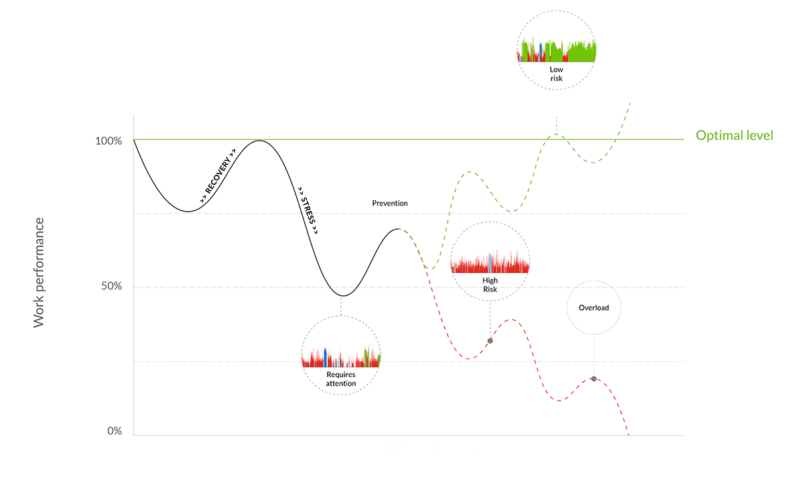
A longer holiday from work can do wonders for well-being. But, on the other hand not all holidays are always restorative and for some, going back to work can feel challenging. That’s why it’s important you know how to support your employees when they are returning to work after a holiday.
For many of us the summertime means the longest holiday period of the year. At its best, a long summer holiday can offer a chance to recharge and rest, and to return to work with new energy, ready to take on the rest of the year.
However, this is not always the case. Sometimes returning to work can feel difficult or give us anxiety and stress. An employee may experience melancholy or even depression when having to go back to work. This is known as ”post vacation syndrome’’. Typical symptoms include a lack of focus and difficulty concentrating, feelings of discomfort, anxiety, and fatigue. These factors can lead to a weakened work performance and ineffectiveness. In other words, there are several signs of presenteeism.

Picture: Employee’s performance and resources affect productivity. The earlier presenteeism and challenges are identified, the better the employer and employee can make the necessary changes to build better habits and prevent potential risks.
Our lives outside of work and our individual circumstances also influence how energized we are when returning to work after a holiday. Whilst others have been able to recharge their batteries during the summer holiday, for some the holiday might not have been the most relaxing and stress-free. This could be down to things like childcare responsibilities or perhaps a home construction project. Therefore, the employer should never assume that every employee comes back to work relaxed and recharged after a holiday.
Of course, even after a successful and relaxing holiday, returning to work can feel difficult. All the fun activities can cause us to delay going to bed by a few hours and even the positive stress we experience while doing some of our favourite things will generate a need for recovery.
An Easier Start Might Relieve Anxiety and Stress
So, how do you support your employees correctly when they are returning to work after their summer holidays? How can you help them get focused on the upcoming autumn and rest of the year?
A fast-paced start and too much pressure right away are only a recipe for more anxiety and stress. It is highly important to allow employees to have a bit of a slower start, give them time to dive into their (most likely) massive number of emails and have them ease back into their work. When this is a commonly agreed upon practice and everyone knows that they are allowed to have a slower start, then everyone will also give each other the time and space needed to get orientated once again. Work motivation is also more likely to stay at a better level when your employees don’t feel like they are bombarded with meeting invitations and to-do lists straight away during their first days back.
Utilizing flexible working hours and ways of working is also a good way to help your employees ease back into their work. Working remotely for the first couple of days can be very beneficial for several reasons. For example, some employees might need time to adjust their sleep rhythm back to normal and leaving out the commute to work for a couple of days can give them a chance to do just that.
It is also important to remind your employees about the importance of taking breaks and having short recovering moments throughout the workday, whether they are working in the office or from home. It is also crucial to make sure that your corporate culture actually allows for sufficient breaks, even amidst all the hurry and change. Even a short few minute microbreaks have been proven to enhance our recovery and energy levels.
Settings Goals Provides Clarity and a Sense of Control
Workload management and prioritizing work tasks are always important topics, but especially so after a long holiday. These need to be considered and discussed to make sure that the load doesn’t grow too high during the rest of the year either.
During the first weeks after the summer holidays, it would be good to schedule one-on-one discussions with your employees. Having these discussions rather soon after an employee has returned to work is a good idea, because you then get a chance to catch up, but can also start planning for the upcoming months and agree upon the employee’s personal goals for work. When the goals and what to prioritize are clear, the employee is more likely to have a sense of control over their own work, which is a crucial part of reducing work stress and also getting rid of that possible post-holiday anxiety.
When the whole team is back from summer holidays it’s also good to have a team planning session and agree upon team level goals. If the situation allows, try meeting up for example for breakfast in person, instead of having a virtual meeting. For many of us, the best part of going back to work is seeing our colleagues and catching up. Doing something together as a team will naturally increase a sense of community and belonging, which will in turn enhance your employees’ well-being.
New Routines Can Spice Up the Chilly Autumn
Even though it is important to get back to the old routines and ordinary life, it can also be good to spice things up a bit. You should consider some new and different practises that you could create or bring to the workplace to enhance your employees’ well-being. This could simply be providing fresh fruits in the office every Friday or organizing an exercise break once a week. New enjoyable routines and even the smallest changes that support employee well-being can have a major positive impact within the work community.
It is also important that you encourage your employees to schedule their time off from work evenly throughout the year. When there are even a few shorter holiday periods scheduled for autumn and spring as well, it can help your employees cope better and bring new energy to their work. However, the outcome should not be that your employees are living from one holiday to another and merely surviving in between. The purpose is to find a sustainable work-life balance.
When returning to work from a holiday is well organized and the whole staff knows they have a chance to ease back into things, you are already setting your staff up for a more efficient and successful rest of the year.
Tips for team leaders:
- Give everyone a chance to ease back into their work.
- Schedule one-on-one discussions with your employees within the first few weeks of being back – catch up and set personal work goals for the rest of the year.
- Organize a team planning session and kick off the autumn face to face together, if you can.
- Make sure your corporate culture actually allows for sufficient breaks and workload management.
- Spice things up with new practises to enhance your employees’ well-being.
Firstbeat Life is a wellness solution designed to support employee health risk management and workplace health promotion. Improve efficiency, reduce health costs, build a resilient workforce and create a caring work environment. Learn more about Firstbeat Life.
You might also be interested in

How to Support Your Employees’ Professional Development – a Crucial Factor in Good Work Performance
With the summer holiday season coming up, things are slowing down in many companies. This is a terrific opportunity to put emphasis on your employees’ professional development. Updating one’s skill…

Well-Being of the Mind and the Body Go Hand in Hand – Tips for Training Your Mind to Beat Stress
The body and the mind are closely interconnected. If your physical health is challenged, it will quickly affect your mental well-being, or if your mind is struggling, it’s reflected in…

How Saga Performance Uses Firstbeat Life to Help High Performance Coaching Clients
Saga Performance specializes in helping corporates and individuals to reach top level performance using a systems based approach. The company’s founder, Satu Ahlman, uses Firstbeat Life as one of the…

